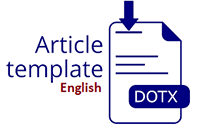ANALYSIS OF INCOME AND WELFARE OF OIL PALM FARMERS IN TANJUNG PASIR VILLAGE SOUTH KUALUH DISTRICT NORTH LABUHANBATU REGENCY
Abstract
Full Text:
PDFReferences
Arifin, B. (2006). Refleksi Strategi Pengentasan Kemiskinan. Bisnis dan Ekonomi Politik. UNISBA, Bandung. BPS. (2024). Kabupaten Labuhanbatu Utara dalam Angka.
Badan Pusat Statistik Propinsi Labuhanbatu Utara (2024). Tanaman Perkebunan dalam Angka.
Krystof, O. (2013). Fact File – Indonesia World Leader in Palm Oil Production. Pratiwi, R.Y., Yusra, A.H.A., Kurniati, D. (2022). Pendapatan dan Tingkat Kesejahteraan Petani Kelapa Sawit di Kecamatan Jangkang Kabupaten Sanggau. Jurnal Ekonomi Pertanian dan Agribisnis (JEPA), 6(1) : 122-129. https://doi.org/10.21776/ub.jepa.2022.006.01.11.
Saragih, F., Panjaitan, F.A.B. (2020). Faktor-Faktor yang Mempengaruhi Pendapatan Usaha Tani Padi Ciherang di Desa Tebing Tinggi Kabupaten Serdang Bedagai. Jurnal Agrbisnis Sumatera Utara (Agrica), 13(1) : 55-65. https://10.31289/agrica.v13i1.3555.g2531.
Soeharno, (2007). Teori Mikro Ekonomi. Andi Offset: Yogyakarta. Sunarti E. (2012). Tekanan Ekonomi dan Kesejahteraan Objektif Keluarga di Pedesaan dan Perkotaan. Prosiding Seminar Hasil-hasil Penelitian IPB: Bogor: LPPM.
Suyanto. (2014). Artificial Intelligency. Bandung: Sekolah Tinggi Teknologi Telkom.
Syafrianti, A., Lubis, Z., Elisabeth, J. (2024). Study of Crude Palm Oil (CPO) Handling and Storage Process in Palm Oil Mills in an Effort to Improve CPO Quality and Reduce the Risk of Contaminants Formation. Journal of Food and Pharmaceutical Sciences, 9(2) 461-470. www.journal.ugm.ac.id/v3/JFPA.
Tulung, F. H. (2011). Peningkatan Pertumbuhan dan Implikasi Terhadap Ketahanan Pangan Naional. Kementrian Pertanian. Jakarta: Komunikasi dan Informatika RI. United State Departement of Agriculture. (2017). Oilseeds: World Markets and Trade. USA: USDA.
Pristiyono, Juliana, Y., & Prayoga. (2022). Measuring Customer Trust Through Digital. Journal of Business Economics and Entrepreneurship (JEBIK), 11(2), 214-229.
Putera, A. P. (2020). The Principle of Trust as the Main Foundation of Banking Activities. Journal of Business Law Bonum Commune, 3(1), 128-139. https://doi.org/10.30996/jhbbc.v3i1.2984
Rashin, M. A., & Ghina, A. (2018). Identification of Innovation and Business Performance in Improving Competitiveness. Journal of Educational Research, 18(2), 213-219. https://doi.org/10.17509/jpp.v18i2.12963
Rustamaji, H. C., Perwira, R. I., & Hartono, E. B. (2018). Integration of Public Service Applications Using Digital Signage-Based Queuing System. Telematics, 15(2), 109. https://doi.org/10.31315/telematika.v15i2.3124
Salam, A. (2018). Financial Inclusion of Islamic Banking Based on Digital-Banking: Optimization and Challenges. Al-Amwal: Journal of Economics and Islamic Banking, 10(1), 63. https://doi.org/10.24235/amwal.v10i1.2813
Santi, M. (2019). Jurnal Eksyar (Journal of Sharia Economics) The Development of Sharia Economics in Indonesia. Jurnal Eksyar (Journal of Sharia Economics), 07(01), 47-56.
Sari, R. L. (2013). Analysis of the Level of Trust in Commercial Bank Customers after the Century Case Yuliza Raina Linda Sari. Journal of Economics and Finance, 1, 6.
Setia Budhi Wilardjo. (2005). Definition, Role and Development of Islamic Banks in Indonesia. Value Added, 2(1), 1-10.
Widyastuti A. (2012). Analisis Hubungan Antara Produktifitas Pekerja dan Tingkat Pendidikan Pekerja terhadap Kesejahteraan Keluarga di Jawa Tengah Tahun 2009. Jurnal Ekonomi Pembangunan, 1(2) : 1-11. https://doi.org/10.15294/edaj.v1i2.472 Kurniawan, D. (2020). Service Excellent Based on Islamic Perspectives in Islamic Banks. TAWAZUN: Journal of Sharia Economic Law, 3(1), 63. https://doi.org/10.21043/tawazun.v3i1.7835
DOI: https://doi.org/10.36987/ecobi.v12i1.7552
Refbacks
- There are currently no refbacks.
ECOBISMA (Journal of Economics, Business and Management) [p-ISSN: 2477-6092] [E-ISSN: 2620-3391] managed by the Faculty of Economics and Business, Labuhanbatu University is disseminated under a Creative Commons Attribution-NonCommercial-Share Alike 4.0 International License.
Based on work at http://jurnal.ulb.ac.id/index.php/ecob.


